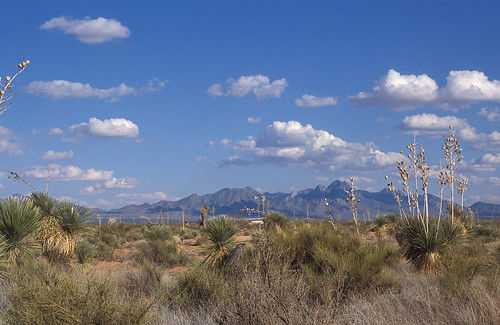
This post is part of the Science Tuesday feature series on the USDA blog. Check back each week as we showcase stories and news from USDA’s rich science and research portfolio.
Some of the world’s most unique cacti, reptiles and plants reside right here in the United States among our nation’s lush watersheds and rangelands. Their ability to survive and thrive provide clues to preserving a diverse, sustainable habitat well into the future. USDA’s Agricultural Research Service (ARS) are the stewards of some of the agricultural lands that these fascinating creatures live on.
One such place, ARS’s Jornada Rangeland Research Facility in Las Cruces, NM, is a treasure trove for observing and gathering long-term information about how these species, environmental factors and agricultural practices intertwine and impact one another.
“The Jornada” is uniquely located within the Chihuahuan Desert, the largest desert in North America. The region covers nearly 650,000 square kilometers and is one of the most biologically diverse arid landscapes in the world. It is one of 18 research locations spread throughout that nation that makes up ARS’s Long-Term Agro-ecosystem Research Network (LTAR).
LTAR was established in 2011—with 10 sites initially and expanded in 2014 to 18—to address our farmers’ need to maximize agricultural food production while minimizing environmental impact. The driving factor behind this network approach to gathering and conducting long-term research was the need to provide enough food, feed, fiber and fuel for a global population expected to grow to more than 9 billion people by 2050.
The agricultural lands that are part of this network include experimental watersheds, rangelands and farms—to more closely coordinate and examine large-scale, multi-year research and environmental management efforts related to our nation’s agricultural ecosystems.
In a sense, LTAR networks are a living laboratory. ARS scientists are working with university collaborators and other USDA and Federal agencies to gather data from these rich biodiverse lands to evaluate and develop sustainable practices that help will help farmers. Scientific experts from various research locations across the United States will analyze agricultural production, environmental quality, natural resource use and economic return on these “outdoor laboratories” over the next 30 to 50 years. They will also closely monitor the unique habitats and the living plant and animal species that reside on these lands.
Each LTAR site has its own unique landscape, environmental influences and habitat. Each region has its own distinctive environment and growing conditions that farmers and ranchers have to weigh. ARS scientists will use their collective information to share and build a scientific knowledge-based approach to developing site- and region-specific agricultural production practices that protect and enrich our natural resources.
Data mined from their observations will offer critical information needed for feeding a growing global population, sustaining land use and adapting to climate change that makes predicting future agricultural food production trends difficult.
Knowing how a variety of plant and animal species survive and thrive in their natural habitats, under a variety of changing environmental conditions may provide some answers to producers to help them meet society’s demands for a sustainable, environmentally conscious food supply system. ARS researchers are committed to providing research-based agricultural production solutions that consider long-term, sustainable environmentally responsible practices needed to meet the world’s growing demand for food, feed and fiber.
Visit: go.usa.gov/cpZa9 for research progress and other information on ARS’s LTAR network.
For an interactive look at USDA's work in conservation and forestry over the course of this Administration, visit http://medium.com/usda-results.
